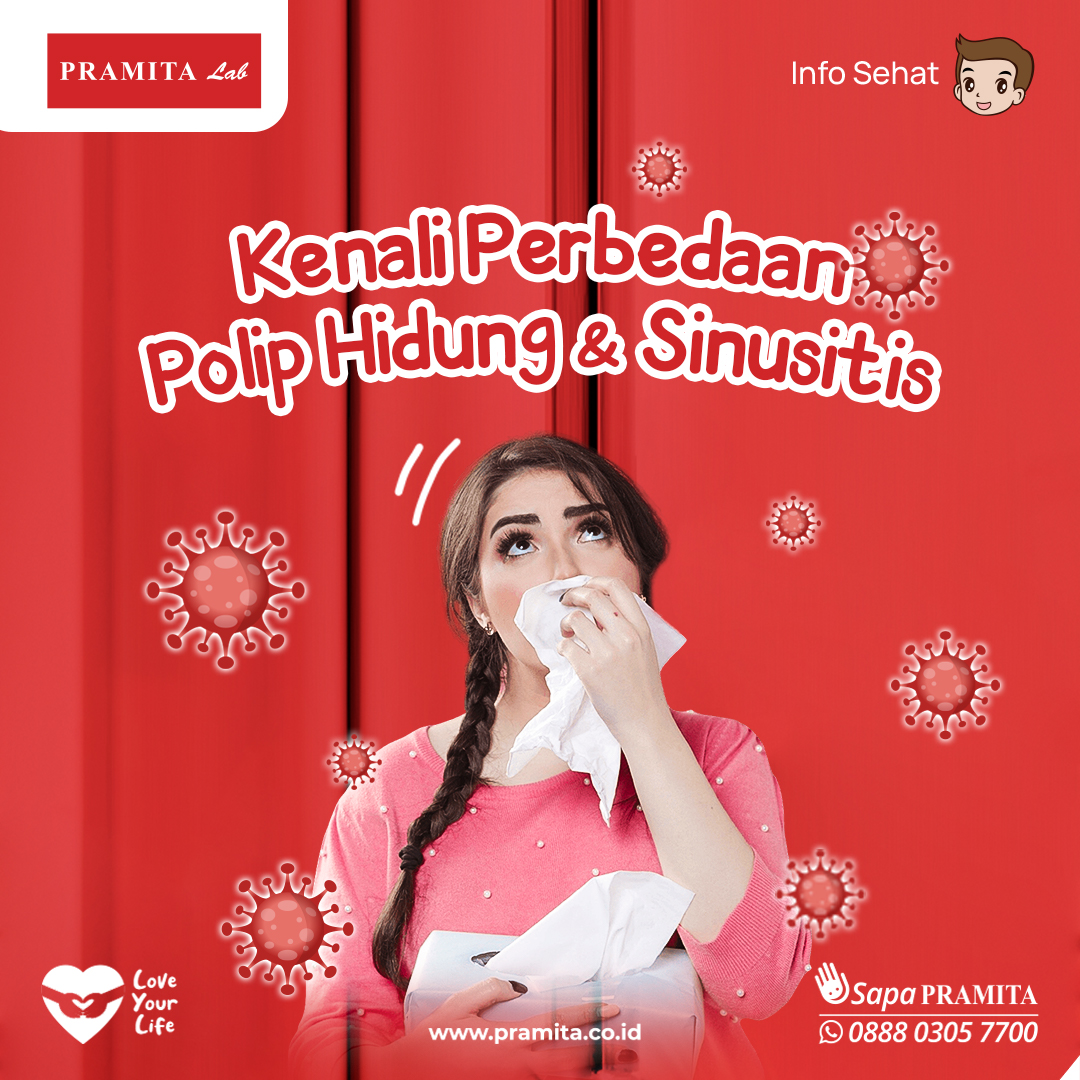Healthy Inspirations

Recognize the Difference Nasal Polyps & Sinusitis
Tue, 5 Dec 2023Understand the Differences Between Nasal Polyps & Sinusitis
There's often a misconception in society that nasal polyps and sinusitis are the same disease. This assumption is understandable due to the similarities in complaints and symptoms experienced by individuals. However, there are recognizable differences in the nature of these diseases.
Common symptoms for both nasal polyps and sinusitis typically include a runny nose, nasal congestion, throat mucus, reduced smell function, facial pain or pressure, and headaches.
Key differences between nasal polyps and sinusitis:
What are Nasal Polyps?
Nasal polyps are soft, fluid-filled lumps in the nasal passages or sinuses, usually white to grayish in color, resulting from mucosal inflammation. Nasal polyps often originate from the ethmoid sinuses (multiple and bilateral), while those from the maxillary sinuses are usually singular and grow backward.
Nasal polyps can occur in both men and women, from children to the elderly, most commonly in adults aged 30-60.
Causes of Nasal Polyps
The exact cause of nasal polyps is not entirely known, but often linked to:
• Allergies (especially allergic rhinitis)
• Chronic Sinusitis
• Irritation
• Nasal obstruction due to anatomical abnormalities.
Risk factors for developing nasal polyps include:
• Being aged 20–40 years or older
• Having asthma
• Vitamin D deficiency
• Alcohol intolerance
• Chronic sinusitis
• Sensitivity to NSAID medications (nonsteroidal anti-inflammatory drugs).
Symptoms of Nasal Polyps
Small nasal polyps tend not to cause symptoms. Typically, symptoms become noticeable when polyps grow larger or are numerous, affecting the respiratory tract.
Symptoms of nasal polyps include:
• Runny or watery nose
• Constant feeling of a blocked nose
• Breathing difficulties due to nasal congestion
• Headaches
• Itching around the eyes
• Reduced sense of smell
• Sleep disturbances and snoring
• Pain or pressure on the forehead
• Upper tooth pain
• Nosebleeds
• Feeling of nasal discharge flowing into the throat (post-nasal drip).
Nasal Polyps Treatment
Common treatments for nasal polyps include:
• Nasal corticosteroids
For stages 1 and 2 polyps, intranasal corticosteroids are recommended for 4-6 weeks. Treatment continues until polyps/symptoms disappear.
• Oral corticosteroids
Proven treatments for blockages caused by nasal polyps include oral corticosteroids like prednisone or dexamethasone.
• Antibiotics and antihistamines.
What is Sinusitis?
Sinusitis is an inflammation of the sinus cavities leading to obstruction in the airways.
These small cavities are located behind the forehead bones, behind the eyes, inside the cheekbone structures, and on both sides of the nasal bridge. As a result, sinusitis sufferers often experience headaches.
There are 4 types of sinusitis, differentiated by the duration of inflammation:
1. Acute Sinusitis: sinus inflammation lasting about 2 to 4 weeks. This is the most common type experienced by most people.
2. Subacute Sinusitis: sinus inflammation lasting about 4 to 12 weeks.
3. Chronic Sinusitis: sinus inflammation lasting more than 12 weeks, possibly for months to years.
4. Recurrent Sinusitis: sinus inflammation occurring three or more times within a year.
Causes of sinusitis include allergies or microbial infections, such as bacteria and viruses, around the small cavities. Consequently, the sinuses produce an excessive amount of mucus, leading to obstruction.
Additionally, sinusitis can be caused by other respiratory tract disorders, especially around the nose, such as nasal polyps, deviated nasal septum, and others.
Sinusitis Symptoms
Sinusitis is characterized by specific symptoms, including:
• Facial pain, especially when bending down
• Nasal blockage, causing breathing difficulties
• Ear pressure
• Unpleasant breath odor
• Fever
• Thick yellow-green nasal discharge
• Disturbed sense of smell.
Sinusitis Treatment Therapy
• Warm compresses around the nose and sinuses
• Drinking warm water
• Avoiding allergy triggers, such as smoke, alcohol consumption, etc.
• Maintaining humid air. A room humidifier can be used for this purpose
• Inhaling warm steam. Place warm water in a large bowl and slowly inhale the steam
• Using decongestant sprays available at pharmacies. However, use these sprays only for a short duration, less than a week.
Author: dr. Garba Prihatiningpuri (Medical Consultant Doctor at PRAMITA Clinical Laboratory, Jl. Pahlawan No. 60 Madiun)

